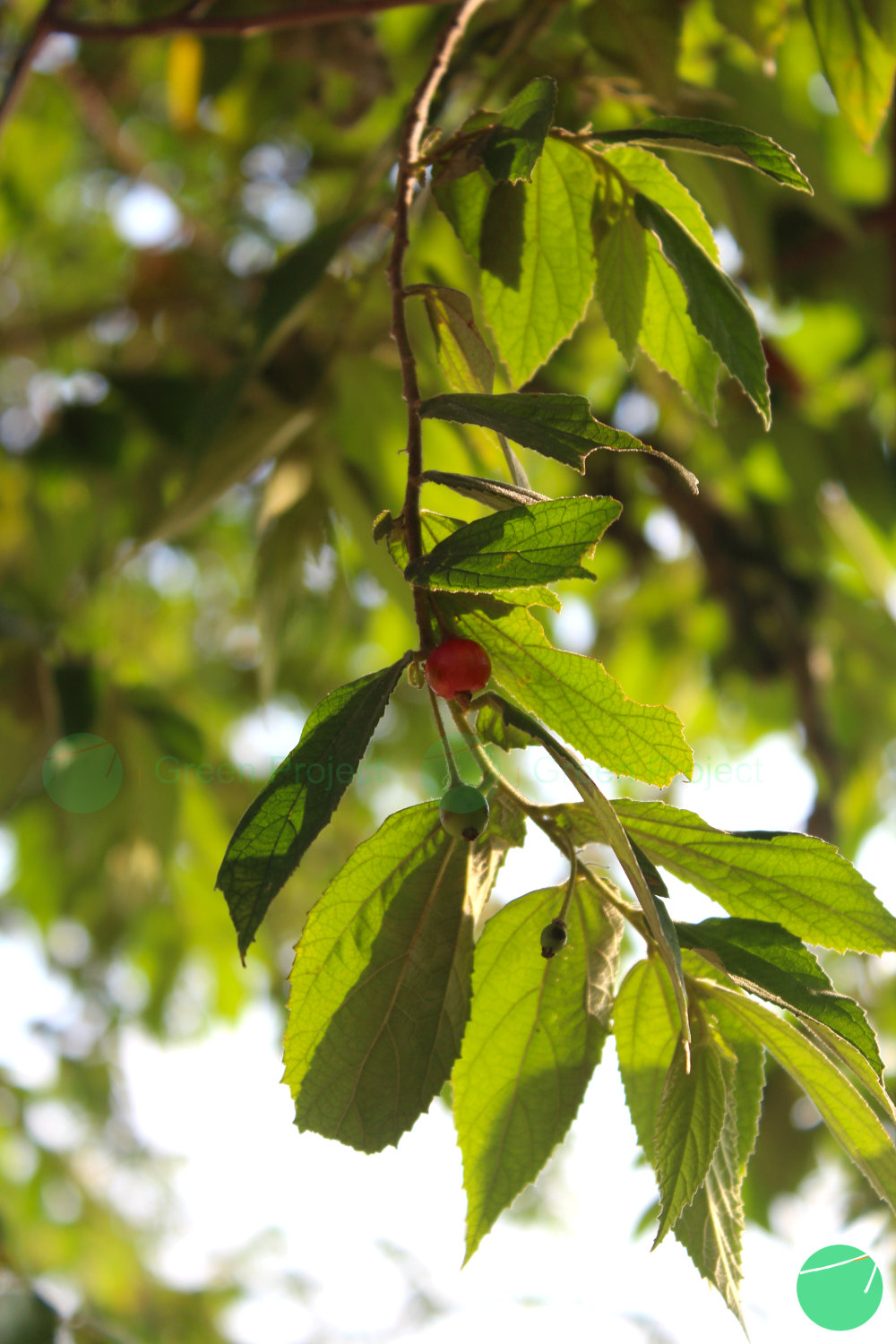Naming Identity
Kersen is scientifically known as Muntingia calabura. The Latin name of this plant comes from the name of a Dutch botanist named Abraham Munting (1626 - 1683). First described as Muntingia calabura in Jamaica by Linnaeus in 1753, the name was a tribute to Abraham Munting's services in the field of botany (Areces-Berazain).
Kersen is popularly known in English as Jamaican cherry, cotton candy berry or Panama berry. Meanwhile, in Spain this plant is known as capuli or cereza, calabura in Brazil, bird cherry in Australia, buah ceri in Singapore and kerukup siam in Malaysia.
Taxonomy
Kingdom | Plantae |
Phylum | Tracheophyta |
Class | Magnoliopsida |
Order | Malvales |
Family | Muntingiaceae |
Genus | Muntingia |
Species | Muntingia calabura |
Origin
Kersen or Jamaican cherry originates from the South American region, especially in countries with tropical climates such as southern Mexico, Belize, Costa Rica, Salvador, Guatemala and Peru.
First planted in Ceylon around 1912. Some cherry trees were also introduced to Hawaii by the United States Department of Agriculture in 1922 (Morton).
A report states that this plant was brought from Mexico to the Philippines at the end of the 19th century AD and then to Thailand, before coming to Peninsular Malaysia and Singapore in 1895, then to Indonesia (Areces-Berazain). Green bats and pigeons are considered to be the main cause of the presence of cherries in empty land on the island of Kalimantan.
Its distribution in Southeast Asian countries with its growth and ability to adapt well makes this plant popular and easy to find in Southeast Asia, so many people think that this plant is native to the Southeast Asian region.
Shape Description
Jamaican cherry is a small evergreen tree that can grow quickly. Its height can reach up to 8 to 13 meters with a distribution in lowland areas with humid tropical climates.
The tree can grow freely and regenerate quickly in most soils, including alkaline and saline soils. Can tolerate drought, shade, and weeds until it grows well in the soil. The maximum lifespan of the tree is estimated to be around 30 years. In general, the tree is quite shady so it can be used as shade for livestock.
The stem is brown with white lines and a rough surface. Meanwhile, the leaves are oval, elliptical, pointed, and green with serrated edges.
The fruit is small with a diameter of around 0.7 to 1.3 cm containing seeds buried in the flesh with a soft texture. It is green when immature and red when ripe and tastes sweet. Apart from being eaten by humans, the fruit is also often eaten by birds and other wildlife.
The fruits are sold in Mexican markets. In Brazil, they are considered too small to be of commercial value but it is recommended that they be planted on riverbanks so that the abundant flowers and fruit falling into the water can act as bait, attracting fish for the benefit of fishermen (Morton).

Jamaican Cherry as an Invasive Plant
The popularity of Jamaican cherries is said to be declining due to their aggressive invasive nature. This happens because it grows quickly and relatively freely in many soil conditions, especially through dispersal by birds and bats through seeds which then germinate (Areces-Berazain). Birds and bats that eat the fruit also pollute the surrounding environment.
In Malaya, the tree is considered a nuisance in home gardens because fruit bats eat the fruit and then spend the day under the eaves of houses and damage verandas and terraces with their pink, seed-like droppings.
Benefits of Jamaican Cherry for Health
Jamaican cherry leaves are said to contain flavonoids, saponins, tannins, alkaloids, triterpenoids, glycosides, anthraquinones, phenols, water, protein, fat, carbohydrates, fiber, ash, calcium, phosphorus, iron, carotene, tianine, ribofalin, niacin, and vitamin C content. Through the lore of content in the leaves and by the traditional beliefs, Jamaican cherry is widely used as a medicine to reduce fever, as gout medicine, as cough medicine, as medicine to lower blood sugar levels or diabetes, and as a natural antiseptic.
Many studies have been conducted to prove that cherry tree leaves can help with diabetes. These include those carried out by Herawati at Sahid University Surakarta through a journal published in 2021 using the method of boiling Jamaican cherry leaves and through the research carried out by Nur Khaleeda Zulaikha Zolkeflee at Universiti Putra Malaysia which was published in 2022 using the drying extraction method. The results have established an initial step towards the development of cherry leaf extract or M. calabura or Jamaican cherry as a potential source of bioactive compounds for the treatment of diabetes.
Meanwhile, traditionally, the flowers are used as an antiseptic and to treat stomach cramps and spasms. Also used to relieve headaches, flu symptoms, and colds. Pharmacology through testing the content of compounds found in Jamaican cherry fruit also supports traditional medicine in its use for controlling pain, inflammatory diseases and as an antioxidant agent (Preethi et al.).